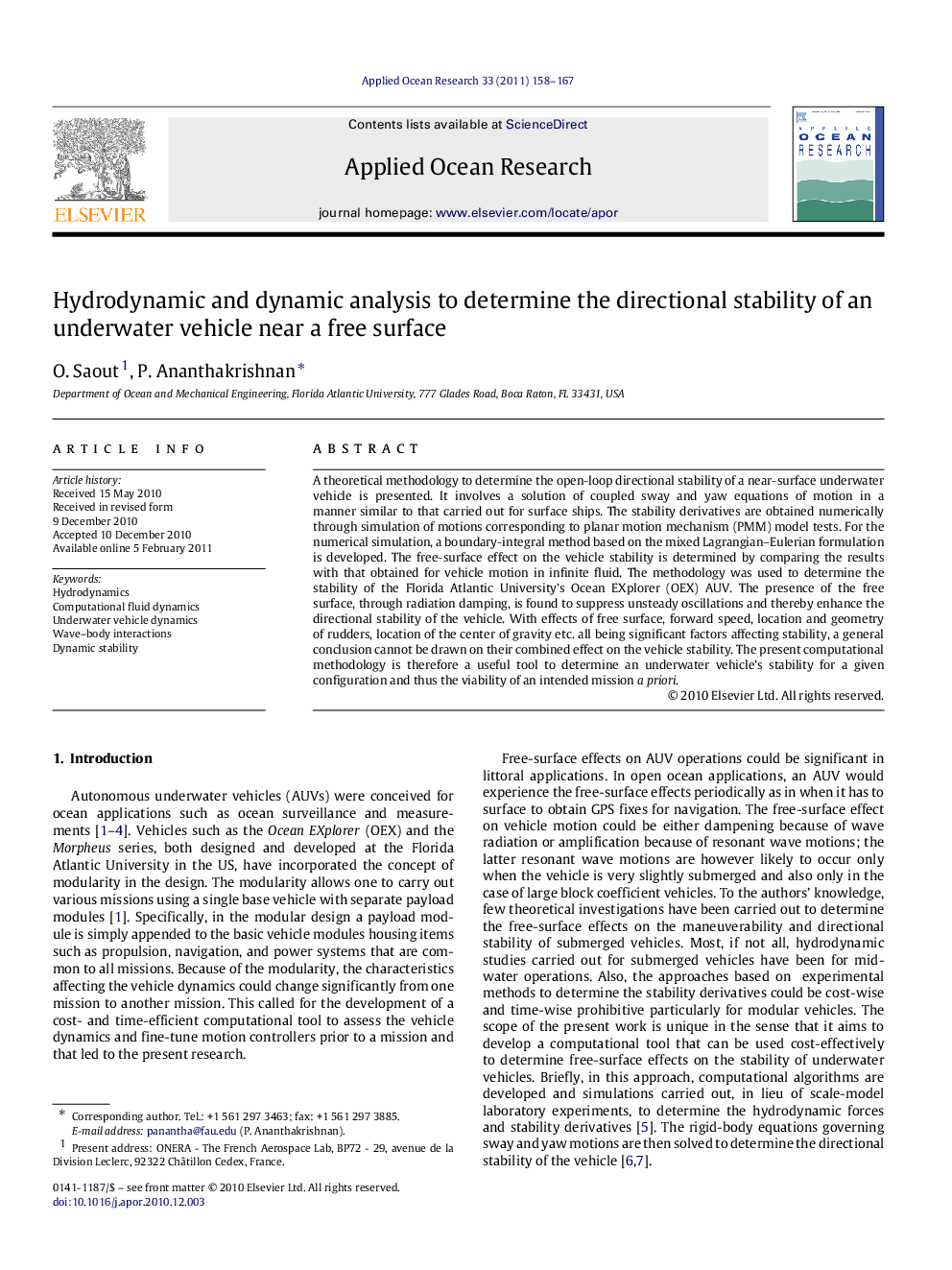| Article ID | Journal | Published Year | Pages | File Type |
|---|---|---|---|---|
| 1720365 | Applied Ocean Research | 2011 | 10 Pages |
A theoretical methodology to determine the open-loop directional stability of a near-surface underwater vehicle is presented. It involves a solution of coupled sway and yaw equations of motion in a manner similar to that carried out for surface ships. The stability derivatives are obtained numerically through simulation of motions corresponding to planar motion mechanism (PMM) model tests. For the numerical simulation, a boundary-integral method based on the mixed Lagrangian–Eulerian formulation is developed. The free-surface effect on the vehicle stability is determined by comparing the results with that obtained for vehicle motion in infinite fluid. The methodology was used to determine the stability of the Florida Atlantic University’s Ocean EXplorer (OEX) AUV. The presence of the free surface, through radiation damping, is found to suppress unsteady oscillations and thereby enhance the directional stability of the vehicle. With effects of free surface, forward speed, location and geometry of rudders, location of the center of gravity etc. all being significant factors affecting stability, a general conclusion cannot be drawn on their combined effect on the vehicle stability. The present computational methodology is therefore a useful tool to determine an underwater vehicle’s stability for a given configuration and thus the viability of an intended mission a priori.
